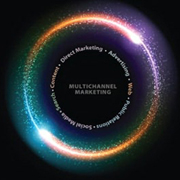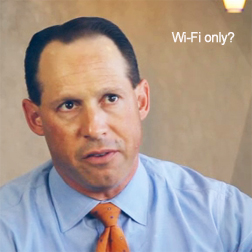I've always believed companies need to be culturally sensitive, but I've never been a fan of most "cultural" marketing campaigns. A new study by Columbia Business School underscores the reason.
Columbia Business School's Michael Morris, the Chavkin-Chang professor of leadership, and Aurelia Mok, assistant professor, City University of Hong Kong (she received her Ph.D. from Columbia Business School in 2010) set out to better understand bicultural identities and how marketing cues might influence their response. It turns out that culturally-skewed campaigns may not resonate.
Cultural campaigns ignore the integration of cultural identities.
The researchers do an excellent job setting up the myth. When a Japanese-American woman strolls through a food court at the mall, is she more likely to opt for sushi or a hamburger? It depends on the woman. It depends to which degree she has integrated her cultural identity.
Prior research found that bicultural individuals switch between their two sets of cultural habits in response to cues in their current setting. Morris and Mok show that these responses differ between two kinds of bicultural individuals: "integrated-self" individuals exhibit chameleon-like behavior, expressing Asian tastes after exposure to Asian symbols, while "divided-self" individuals behave like cultural contrarians, expressing American tastes even after exposure to Asian symbols.
This holds true even when cues are presented subliminally, suggesting that unconscious motives are at work. It's these unconscious responses that can add the most weight, but it's also the hardest to measure.
So the researchers devised a subliminal priming technique in which participants were repeatedly flashed "Asian" or "American" while reading words in a word recognition test. The cues could not be seen, but were flashed long enough to be caught by their subconscious minds. The subjects were then shown different products that they could click on for more information.
These Asian-Americans did not skew toward Asian presets. Instead, subjects responded based on their degree of bicultural integration. In some cases, integrated individuals experienced a self-defense response that caused them to respond with less interest to marketing messages that skewed Asian because they felt (consciously or subconsciously) the ads were exclusionary and even caused them anxiety in losing their self-identity versus a cultural one.
The brilliance in understanding people and not stereotypes.
Modern marketers place considerable effort on lacing campaigns with cultural markers in the hopes of reaching a specific segment of the population. The idea might show cultural awareness, but it is equally likely to prey on stereotypes and cause some members of that segment to become disinterested or even disassociated with the brand, depending on how integrated the individual's identity might be.
It is especially prevalent in Hispanic marketing efforts, which often attempt to reach a Hispanic public based on the pre-conceived belief that they fit certain stereotypes. They do not.
Not only does Hispanic marketing run the risk of alienating diversity within a broad definition (e.g., Cuban vs. Mexican vs. Dominican Republican, etc.) but each generation removed from their cultural identity becomes less motivated by Hispanic messaging and more likely to identify with being American. In such cases, much like Asian groups, they may even have an aversion to the message.
Likewise, although not part of the study, there are other differences as well. Hispanic and Latino publics in California, Florida and Texas are all very likely to have different regional identities unique to their geographical region. But despite this, marketers frequently insist on developing campaigns to the broader base.
Certainly, some cultures seem to be more resistant to assimilation than others. But at the same time, given cultural identity is strongly associated with individual preferences and not groups, marketers need to start asking themselves if attempting to capitalize on cultural identity is worth the long-term risk of alienation. And, perhaps even more importantly, if attempting to base marketing campaigns on stereotypes is the exact opposite of what they are trying to accomplish.
People are more likely bound and identifiable based on specific interests and experiences. Marketers need to give more cadence to those identifiers than cultural bias, especially in a country like the U.S.
Columbia Business School's Michael Morris, the Chavkin-Chang professor of leadership, and Aurelia Mok, assistant professor, City University of Hong Kong (she received her Ph.D. from Columbia Business School in 2010) set out to better understand bicultural identities and how marketing cues might influence their response. It turns out that culturally-skewed campaigns may not resonate.
Cultural campaigns ignore the integration of cultural identities.
The researchers do an excellent job setting up the myth. When a Japanese-American woman strolls through a food court at the mall, is she more likely to opt for sushi or a hamburger? It depends on the woman. It depends to which degree she has integrated her cultural identity.
Prior research found that bicultural individuals switch between their two sets of cultural habits in response to cues in their current setting. Morris and Mok show that these responses differ between two kinds of bicultural individuals: "integrated-self" individuals exhibit chameleon-like behavior, expressing Asian tastes after exposure to Asian symbols, while "divided-self" individuals behave like cultural contrarians, expressing American tastes even after exposure to Asian symbols.
This holds true even when cues are presented subliminally, suggesting that unconscious motives are at work. It's these unconscious responses that can add the most weight, but it's also the hardest to measure.
So the researchers devised a subliminal priming technique in which participants were repeatedly flashed "Asian" or "American" while reading words in a word recognition test. The cues could not be seen, but were flashed long enough to be caught by their subconscious minds. The subjects were then shown different products that they could click on for more information.
These Asian-Americans did not skew toward Asian presets. Instead, subjects responded based on their degree of bicultural integration. In some cases, integrated individuals experienced a self-defense response that caused them to respond with less interest to marketing messages that skewed Asian because they felt (consciously or subconsciously) the ads were exclusionary and even caused them anxiety in losing their self-identity versus a cultural one.
The brilliance in understanding people and not stereotypes.
Modern marketers place considerable effort on lacing campaigns with cultural markers in the hopes of reaching a specific segment of the population. The idea might show cultural awareness, but it is equally likely to prey on stereotypes and cause some members of that segment to become disinterested or even disassociated with the brand, depending on how integrated the individual's identity might be.
It is especially prevalent in Hispanic marketing efforts, which often attempt to reach a Hispanic public based on the pre-conceived belief that they fit certain stereotypes. They do not.
Not only does Hispanic marketing run the risk of alienating diversity within a broad definition (e.g., Cuban vs. Mexican vs. Dominican Republican, etc.) but each generation removed from their cultural identity becomes less motivated by Hispanic messaging and more likely to identify with being American. In such cases, much like Asian groups, they may even have an aversion to the message.
Likewise, although not part of the study, there are other differences as well. Hispanic and Latino publics in California, Florida and Texas are all very likely to have different regional identities unique to their geographical region. But despite this, marketers frequently insist on developing campaigns to the broader base.
Certainly, some cultures seem to be more resistant to assimilation than others. But at the same time, given cultural identity is strongly associated with individual preferences and not groups, marketers need to start asking themselves if attempting to capitalize on cultural identity is worth the long-term risk of alienation. And, perhaps even more importantly, if attempting to base marketing campaigns on stereotypes is the exact opposite of what they are trying to accomplish.
People are more likely bound and identifiable based on specific interests and experiences. Marketers need to give more cadence to those identifiers than cultural bias, especially in a country like the U.S.







































